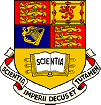
 |
|
News Page |

February 2001 |
This month's news stories:Cassini Jupiter FlybyFrom our Bologna correspondent Welcome... Thierry Corbard SPAT members attend AGU meeting |
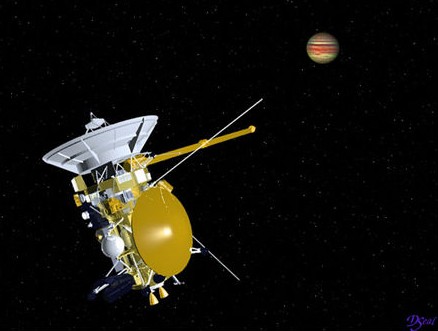 Cassini Jupiter Flyby
Cassini Jupiter FlybyA milestone in the Cassini mission to Saturn was reached in late December when the spacecraft carried out a fly past of Jupiter. This flyby provided us with a unique scientific opportunity as at the same time the Galileo spacecraft was taking measurements inside the magnetosphere of Jupiter. This is the first time that such two-point measurements have occurred at a planet other than our Earth. The data will allow us for the first time at Jupiter to be able to understand the influence that the solar wind has on the dynamics of the Jovian magnetosphere. (We are the PI institute for the magnetometer onboard Cassini and Co-I institute for the Galileo magnetometer). Another exciting aspect of this data set is that the Hubble Space Telescope was taking measurements of the Jovian aurora whilst Cassini was both approaching Jupiter and also during its outbound pass. This will allow us to better understand the influence that the solar wind has on the generation of the aurora at Jupiter.
The Cassini/Huygens mission is a joint NASA/ESA project and the spacecraft was launched in October 1997. A number of planetary flybys have taken place in the last few years, with Jupiter being the last, enabling the spacecraft to gain enough energy and momentum in order to reach Saturn. The spacecraft is flying past Jupiter on its dusk flank a region that has been very sparsely visited in the past, so the Cassini flyby is yielding unique measurements of the Jovian environment. A six-month data taking campaign (October 2000 – March 2001) is taking place, with the closest approach to Jupiter having occurred on 30 December 2000 at a distance of 140 planetary radii.
Initial analysis of the Cassini magnetic field data reveals that we have entered through the bow shock and magnetopause of Jupiter on a number of occasions (even at these large distances). The implication therefore being that the magnetosphere expanded over the spacecraft as it flew by, thereby confirming the very dynamical nature of this very large magnetosphere.
Further general information on this unique flyby can be found on JPL's Millennium Flyby Page and science information at the Cassini Jupiter Flyby Science Page.
Watch this space for updates in the next couple of months!
Michele Dougherty 13th February 2001
Prof. John Harries, SPAT head of group, is currently enjoying a few months sabbatical in Bologna, Italy. This month he writes telling us how he is settling in, with the promise of more news to follow...
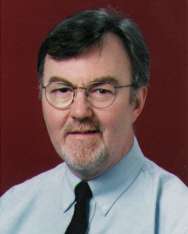 Letter No 1, Saturday 20 January 2001
Letter No 1, Saturday 20 January 2001Well, your new correspondent is settling into Bologna now. Sheila and I have been here almost two weeks, the first few days being spent getting to know, and stocking with food, our apartment in the southern quarter of the old city, just inside the inner ring road. This road marks the course of the old city walls (which still exist in places), with all the radial roads leading out from the city centre passing through the old gates of the city as they cross the ring road. The old city of Bologna is an almost perfect circle, defined by the walls, with Roman roads, the Via Emilia and Via Cassia running roughly east-west and north-south through the centre. The city is famous for its 'porticos', the covered pavements which run for miles and miles throughout the city. The first floors of the buildings are built out over these porticos (the origin of the porticos was in medieval times, to make more accommodation for the growing number of 'studenti' at the university).
Our apartment is on the second floor of an old house near the southernmost gate of the city. It is in a quiet, small street ('Vicolo' rather than 'Via'), and is about 10 minutes walk from the very centre of the city, which has some beautiful sights (which your correspondent will describe over the coming months). The apartment is at the top of the house, which contains 5 other apartments, and is 'split level'. We have a bathroom, kitchen and living area on the lower floor, then a staircase rising up to a half-floor, which is the bedroom. There are two windows onto the Vicolo, and two skylights. The apartment is comfortable, but it is taking some getting used to having close neighbours, some of them young and quite noisy (young people, yes, well!).
Shopping is fun (for food I mean: shopping for anything else is never fun, in this correspondent's view). There are lots of small specialised shops (the sort that have nearly died out in Britain), and the food they sell is magnificent: gorgeous fresh vegetables and fruit, delicious pasta, cakes, chocolate, cheese, and, of course, wine. This aspect of life here is NOT a problem.
Oh, yes, I have also been going to work! More about that in future letters, but I am sharing an office with Rolando Rizzi, my host here. So far, I have been getting my new portable PC set up (with excellent help from Justin back at College, and the computer manager here, Enrico). I am already helping Rolando with teaching his course in atmospheric physics, by lecturing on radiation: but to a much smaller class, of about 12, than I am used to. On the research front, we are talking about the effect of clouds on climate, and particularly the information in the far IR. The best thing about work so far, though, is my bus ride every morning and evening. Armed with a bunch of pre-purchased tickets (one price for all journeys), I walk to the nearby bus stop and catch the No 33 in the morning around the ring road ('direzione destra') and No 32 in the evening which goes in the other direction ('direzione sinstra'). Bearing in mind Italian traffic, and the fact that the bus drivers tend to bomb along at a rate of knots, this is great fun!
And today Bologna beat Verona 1-0, so all is well in the capital of Emiglia-Romana! However, I am totally unaware of the fortune of Aberavon rugby football club: that will have to remain the case until Monday morning, when I log on to the BBC.
John Harries 20th January 2001
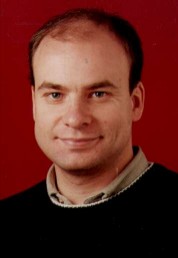 Welcome to... Thierry Corbard
Welcome to... Thierry CorbardJanuary 2001 saw two new arrivals in SPAT. As reported in last October's SPAT News, Professor Mike Thompson has joined us from Queen Mary College. Arriving at the same time is a new research associate, Thierry Corbard, to work with Mike in his helioseismology research. Thierry has provided a few words here to introduce himself...
I was born in Britany (France) in the early 70s (!) and so grew up in a climate pretty similar to London. I moved to the sunny 'Cote d'Azur' to start studying... the Sun and its oscillations at Nice Obervatory during my PhD. Then for 2 years I joined the High Altitude Observatory of Boulder, Colorado where I fell in love with both the scenic countryside and the easy and quiet lifestyle. There I continued my work on the Solar interior using data from the LOWL instrument developped at HAO. I joined SPAT as a PostDoc in Jan 2001 for 8 months to work with Mike Thompson on the analysis of GONG/SoHO observations and will continue afterwards in Cambridge with Douglas Gough for 10 months. Away from work, I enjoy taking my bike and a tent for a one week or one month trip (less and less possible I'm afraid), snowboarding, swimming, classic rock and blues music and... being lazy at home, but the best and the more important of course is to share all that with friends. Feel free to visit my webpage at http://www.obs-nice.fr/corbard for more on my work and some pictures from Nice and Boulder.
Bob Forsyth and Thierry Corbard 7th February 2001
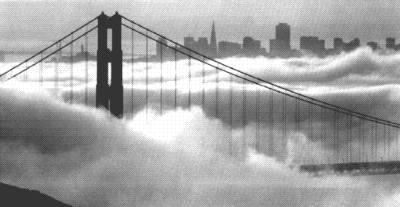 SPAT Members Attend AGU Fall Meeting
SPAT Members Attend AGU Fall MeetingIn December a number of SPAT members travelled to San Francisco, California, to attend the Fall Meeting of the American Geophysical Union (AGU) held in the city's Moscone Convention Center. Two of the participants, Ashley Tomsett, a final year atmospheric physics PhD student, and Joachim Schmidt have provided SPAT News with comments on their trip. Around 6000 scientists from around the world attended the meeting, which covered a diverse range of topics including Volcanology and Seismology, Atmospheric and Ocean Sciences, and Heliospheric and Magnetospheric Physics.
At the meeting Ashley presented a poster co-authored with Dr. Ralf Toumi entitled 'Persistence in Extreme Precipitation Over England and Wales' in the Non-Linear Geophysics section of the meeting. The poster discussed work carried out in SPAT that has been looking at ways of applying non-linear analysis methods to the study of extremes in the UK weather and climate. The meeting provided an excellent opportunity to discuss this work with other scientists from around the world. Other than the non-linear geophysics sections Ashley also attended presentations on recent work carried out in such topics as the North Atlantic Oscillation and Climate Change.
Joachim presented a poster proposing a reconnection mechanism of magnetic field lines, which very likely occurs at the boundary of coronal mass ejections and which could be responsible for the disruption of coronal mass ejections in the solar wind. This poster was discussed with at least twenty American and European scientists in detail.
During the visit, whilst the rest of the US suffered some of it's worst winter weather in years, San Francisco remained sunny and mild. Ashley had the opportunity to visit some of the famous sights of the city, including the Golden Gate Bridge and the infamous Alcatraz. Joachim took adavantage of the good weather to drive around San Francisco on the route 49 from Twin Peaks, the Sunset Boulevard, Golden Gate Park to the old Franciscian monastery in central San Francisco etc., to cross the John F. Kennedy Bridge and visit the vinyards north of Golden Gate Bay and also to cross the Sierra Nevada and drive into the Rocky Mountains to find some beautiful resting-points in the Yosemite valley.
Ashley holds a CASE award with the Environment Agency, who provided financial support for him to attend the meeting.
Ashley Tomsett 26th January 2001, and Joachim Schmidt 8th February 2001
View last month's news, older news or return to Space and Atmospheric Physics home page